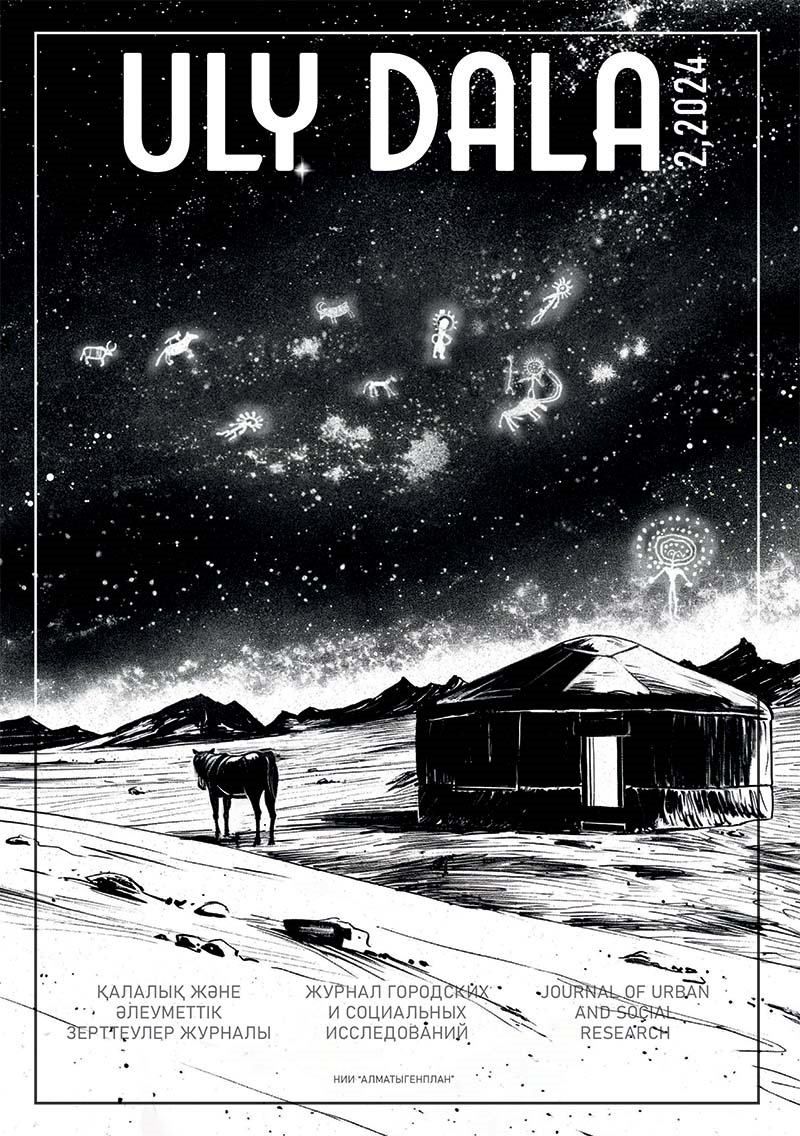The place of crime cannot be changed? Comprehensive analysis of the spatial distribution of thefts and violent crimes in Almaty and Astana
Keywords:
criminology, spatial distribution of crime, evidence–based policy, violent crimes, property crimes, hot spotsAbstract
This article presents a comprehensive study of the distribution of non-serious thefts and violent crimes in the two largest metropolitan areas of Kazakhstan: Astana and Almaty. We examine the phenomenon of crime from different aspects: spatial patterns of crimes, “hot spots” of cities, their dynamics over the last 5 years, the connection of different types of crimes with the characteristics of space (number of residents, average value of real estate, etc.) and territories, which have abnormally large number of crimes, given their characteristics. The results of the analysis can be useful in planning preventive police work, as well as for a general understanding of the criminal situation and its dynamics in Astana and Almaty.
References
Andresen, Martin, & Jordan Wong. (2023). The influence of micro-places on
the spatial patterns of property crime in Vancouver, Canada. International
Journal of Comparative and Applied Criminal Justice.
BBC. (2021). Hotspot policing cuts Southend crime by 74%, says Essex force.
https://www.bbc.com/news/uk-england-essex-58591105
Bowers, Kate. (2014). Risky facilities: Crime radiators or crime absorbers? A
comparison of internal and external levels of theft. Journal of Quantitative
Criminology, 30, 389—414.
Brantingham, Patricia, & Paul Brantingham. (1995). Criminality of place. European journal on criminal policy and research, 3(3), 5—26.
Eck, John, Spencer Chainey, James Cameron, Michael Leitner, & Wilson Ronald. (2005). Mapping Crime: Understanding Hot Spots.
Farrell, Graham, Nick Tilley, & Andromachi Tseloni. (2014). Why the crime
drop? Crime and justice, 43(1), 421—490.
Felson, Marcus, Yanqing Xu, & Shanhe Jiang. (2022). Property crime specialization in Detroit, Michigan. Journal of Criminal Justice.
Fortin, Marie-Josee, & Mark Dale. (2009). Spatial autocorrelation. The SAGE
handbook of spatial analysis, 89—103.
Garcia, Marie R., Ralph B. Taylor, & Brian Lawton. (2007). Impacts of violent
crime and neighborhood structure on trusting your neighbors. Justice Quarterly, 24(4), 679—704.
Getis, Arthur, & Keith Ord. (1992). The analysis of spatial association by use
of distance statistics. Geographical analysis, 24(3), 189—206.
Gill, Charlotte, Alese Wooditch, & David Weisburd. (2017). Testing the “Law
of Crime Concentration at Place” in a Suburban Setting: Implications for
Research and Practice. J Quant Criminol 33, 519—545.
Hipp, John R, & Seth A. Williams. (2020). Advances in Spatial Criminology:
The Spatial Scale of Crime. Annual Review of Criminology, 3, 75—95.
Humanitarian Data Exchange (HDX). Kazakhstan: Population Density
for 400m H3 Hexagons. https://data.humdata.org/dataset/kontur-population-kazakhstan
Mawby, Rob C., & Alan Wright. (2012). The police organisation. In Handbook
of policing, 252—280.
Nelson, Paul. (2015). Violent and property crime trends: local and international comparisons. Bureau Brief, Issue Paper, 109.
Piquero, Alex R., David P. Farrington, & Alfred Blumstein. (2003). The criminal career paradigm. Crime and justice, 30, 359—506.
Ratcliffe, Jerry. (2010). Crime mapping: spatial and temporal challenges.
Handbook of quantitative criminology, 5—24.
Sherman, Lawrence, Patrick Gartin, & Michael Buerger. (1989). Hot Spots of
Predatory Crime: Routine Activities and the Criminology of Place. Criminology, 27(1), 27—56.
Tita, George, & Steven Radil. (2010). Making space for theory: The challenges
of theorizing space and place for spatial analysis in criminology. Journal of
Quantitative Criminology, 264, 467—479.
United Nations Office on Drugs and Crime. (2023). Victims of intentional homicide. https://dataunodc.un.org/dp-intentional-homicide-victims
U.S. Department of justice Office of justice programs. Practice Profile: Hot
Spots Policing. https://crimesolutions.ojp.gov/ratedpractices/8#mam
van Dijk, Jan, Paul Nieuwbeerta, & Jacqueline Larsen. (2021). Global crime
patterns: An analysis of survey data from 166 countries around the world,
2006–2019. Journal of quantitative criminology, 1—36.
Weisburd, David. (2015). The law of crime concentration and the criminology of place. Criminology, 53(2), 133—157.
Weisburd, David, & Anthony Braga. (2006). Hot spots policing as a model
for police innovation. Police innovation: Contrasting perspectives, 225—244.
World Population Review. (2022). Crime Rate by Country. https://worldpopulationreview.com/country-rankings/crime-rate-by-country
Wuschke, Kathryn, Martin A. Andresen, Paul J. Brantingham, Christopher
Rattenbury, & Andrew Richards. (2018). What do police do and where do
they do it? International Journal of Police Science & Management, 20(1), 19—27.
Downloads
Published online
Issue
Section
License

This work is licensed under a Creative Commons Attribution-NonCommercial 4.0 International License.

